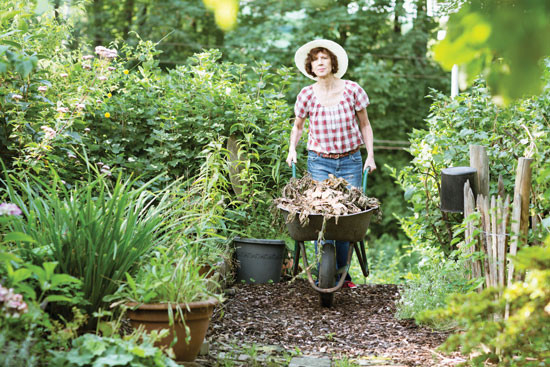
At special moments, the sky becomes a flower bed in the firmament
Adrian Higgins
THE sky has yet to fall, but if it did, most folks these days would wait for their smartphone alerts to inform them of the event.
People don’t look at the sky anymore, a problem that predates even the chin-down screen age. This is odd, when you consider that the sky is the largest single natural element in our lives.
Even within the concrete canyons of the city, there’s plenty of sky to go around. Grab it, I say. It’s mesmerising, it’s beautiful, it’s free.
If you take a few minutes to study the heavens, you will see some amazing things: eagles, vultures, a formation of geese. Contrails are like wet lines of paint, intersecting, shifting and diffusing. Clouds, in all their variation, will tell you the direction of the next weather front and hint at its ferocity.
I am amazed whenever I feel a slight breeze on the ground and look up to see a raging current aloft, the clouds pushed violently by strong rivers of air.
Magical skies of the year
I’m thinking about the sky now because the next few weeks offer what I believe are the most dramatic, vivid and magical skies of the year. The truly thrilling times are around dawn and dusk, when you can get colours that are astonishing in themselves and mind-boggling in their combinations.
A few years ago, I witnessed a sunrise over the Potomac River that was a calico of indigo, purple, violet and orange and of such mystical intensity that I half expected to see Charlton Heston emerge in a winged chariot.
For the gardener, the subdued nature of the landscape reinforces the aerial display, and, at special moments, the sky becomes a flower bed in the firmament.
Just as architects will orient a house to take in a view of the lake, the mountains or the ocean, the landscape designer can play to the sky. It helps to have a viewing point, indoors or out, and to be mindful that the sun rises in the southeast and sets in the southwest.
Sky on a plate
An open meadow will hand you the sky on a plate, but some sort of frame will give the vista coherence. In a small urban backyard, that might be the 15-foot gap between a holly and a magnolia.
The artist James Turrell has spent a career exploring light and space and is known for his Skyspace works that force a focused view of the sky. Artists, like gardeners, learn how to see nature. On canvas, no one brings the dreamy qualities of the sky alive quite like Ren Magritte.
Perhaps it is those shared garden-art perceptions that make me think of the Glenstone Museum in the Washington suburb of Potomac, Maryland, as a place where the sky plays such an important role.
You cannot view Jeff Koons’ quirky “Split-Rocker,” either from afar in silhouette or close up against its (in-season) fabric of flowers, without seeing its place against the sky.
The cluster of galleries in the main building is centred around a large-scale water garden that is wholly enclosed by the circle of connected galleries to form a Turrell-like frame for the sky.
Without the aquatic plant coverage of summer, the water court mirrors the sky and amplifies its winter role. The colour of the air is different, and as clouds move across the sky, they move from one edge of the frame to the other.
Unfettered horizon
You don’t need an entirely open space or an unfettered horizon to appreciate the value of the winter sky. Watching the waning afternoon light through a woodland demonstrates that this is at best a dance between the opalescent sky and the black-branched tree.
Sometimes the sky is grey and sunless, a feeble pewter glow so ably depicted in Dutch landscape paintings. Such paintings speak to the long, dark, hard winters of the north.
You will find a stark example of this at the National Gallery of Art, where visitors to the West Building are greeted by a large-scale landscape by Jacob Maris, which depicts a bleak wintry scene across a canal.
The title has as much breadth as the picture: “View of the Mill and Bridge on the Noordwest Buitensingel in The Hague” (1873). A hint of sun is caught in the chilly water and a pair of windmills allude to the icy winds from the North Sea. Two figures, a woman and child, are bundled against the elements. Such a day should hasten us all to shelter.
But on the type of dry, warm days that now seem so common, we can at least look up and look around and realise that, at least for the next few weeks, the sky’s the limit.
- The article first appeared in The Washington Post
Follow this link to join our WhatsApp group: Join Now
Be Part of Quality Journalism |
Quality journalism takes a lot of time, money and hard work to produce and despite all the hardships we still do it. Our reporters and editors are working overtime in Kashmir and beyond to cover what you care about, break big stories, and expose injustices that can change lives. Today more people are reading Kashmir Observer than ever, but only a handful are paying while advertising revenues are falling fast. |
| ACT NOW |
| MONTHLY | Rs 100 | |
| YEARLY | Rs 1000 | |
| LIFETIME | Rs 10000 | |











